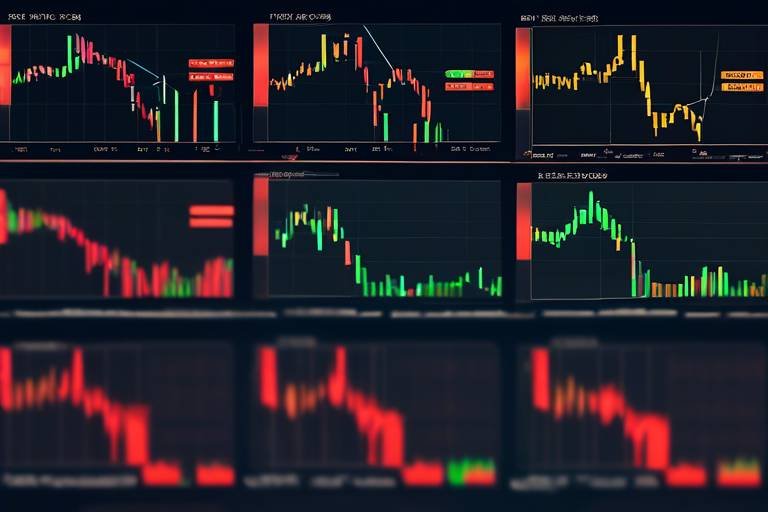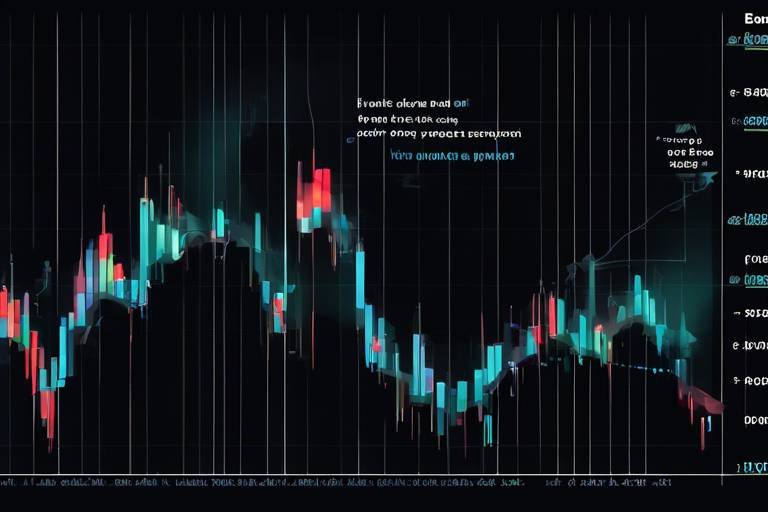The Impact of Global Market Trends on Cryptocurrency Trading
The world of cryptocurrency trading is as dynamic as it is enticing. With the rapid evolution of digital currencies, traders are constantly navigating a landscape influenced by a myriad of global market trends. Have you ever wondered how a tweet from a tech mogul or a political upheaval in a distant country can send shockwaves through the crypto market? In this article, we will explore how these global market trends shape the behavior of cryptocurrencies, the implications for traders, and what the future might hold in this ever-changing economic environment.
Before diving into the complexities of market trends, it's crucial to understand the foundational elements of cryptocurrency. At its core, cryptocurrency is a form of digital or virtual currency that uses cryptography for security, making it nearly impossible to counterfeit. Unlike traditional currencies, which are issued by governments, cryptocurrencies operate on decentralized networks based on blockchain technology. This decentralized nature not only enhances security but also provides a level of transparency and trust that many traditional financial systems lack. Key terms such as "wallet," "mining," and "altcoin" are essential to grasp as they form the vocabulary of this digital frontier. Understanding these basics sets the stage for comprehending how global market trends influence trading behavior.
Economic indicators play a significant role in shaping the cryptocurrency market. Factors such as inflation rates, employment statistics, and GDP growth can dramatically sway investor sentiment and trading decisions. For instance, when inflation rates rise, the purchasing power of traditional currencies diminishes, prompting investors to seek alternative stores of value, such as cryptocurrencies. This shift in demand can lead to price surges in the crypto market. By keeping an eye on these indicators, traders can better anticipate market movements and make informed decisions that enhance their trading strategies.
Inflation acts as a double-edged sword for investors. On one hand, it erodes the value of fiat currencies, pushing individuals toward cryptocurrencies as a hedge against devaluation. As inflation rises, so does the demand for digital currencies, often resulting in increased prices. For example, during periods of high inflation, we often see a notable uptick in Bitcoin and other cryptocurrencies as investors flock to them for safety. Understanding this relationship is crucial for traders looking to capitalize on market trends.
Looking back at historical data, we can observe patterns that highlight the influence of inflation on cryptocurrency adoption. For instance, during the 2008 financial crisis, Bitcoin emerged as a beacon of hope for many investors seeking refuge from traditional financial systems. This event marked a significant turning point in the perception of cryptocurrencies, establishing them as viable alternatives during economic downturns. By analyzing these historical trends, traders can glean insights that may inform their future strategies.
Investor sentiment often shifts dramatically during inflationary periods. When inflation rises, fear and uncertainty can drive traders to adopt more cautious strategies. This behavior can lead to increased volatility in the cryptocurrency market, as traders react to news and economic indicators. Understanding these psychological factors is essential for traders who wish to navigate the turbulent waters of the crypto market effectively.
Major global events — think geopolitical tensions, natural disasters, or financial crises — can lead to sudden and unpredictable shifts in the cryptocurrency market. For instance, when a country announces a ban on cryptocurrency trading, the market can react swiftly, often resulting in significant price drops. Conversely, positive news, such as a major corporation adopting Bitcoin as a payment method, can lead to surges in prices. Being aware of these global events and their potential impact on the market is vital for traders aiming to develop effective trading strategies.
The rise of technology in the trading sphere has revolutionized how cryptocurrencies are bought and sold. Innovations such as algorithmic trading and blockchain advancements have enhanced the efficiency and accessibility of trading for both novice and experienced traders. These technologies have not only streamlined the trading process but also opened up new avenues for profit generation.
Algorithmic trading involves using complex mathematical models and automated systems to execute trades. This approach allows traders to capitalize on market trends without the need for constant monitoring. Imagine having a digital assistant that watches the market for you, executing trades based on pre-set criteria. This technology has democratized trading, making it accessible to a broader audience while also increasing the speed and efficiency of transactions.
Blockchain technology has significantly enhanced transparency in cryptocurrency transactions. Each transaction is recorded on a public ledger, ensuring that all parties can verify the authenticity of transactions. This level of transparency fosters trust among investors and can positively impact trading behaviors. When traders feel confident about the integrity of the market, they are more likely to engage actively, leading to increased liquidity and stability.
As we look to the future, emerging trends such as decentralized finance (DeFi) and evolving regulatory landscapes will undoubtedly shape the cryptocurrency trading environment. These trends present both opportunities and challenges for traders navigating this complex market.
Decentralized finance platforms are revolutionizing traditional finance by offering decentralized alternatives to conventional banking services. This growth in DeFi impacts trading strategies and market liquidity, as more individuals seek to engage with these innovative platforms. Traders who adapt to these changes may find themselves at a significant advantage in the evolving market landscape.
As governments worldwide grapple with how to regulate cryptocurrencies, the landscape is constantly shifting. Understanding these regulatory changes is vital for traders, as they can significantly affect trading practices and market behavior. Staying informed about these developments will empower traders to navigate the evolving legal environment effectively.
- What are cryptocurrencies? Cryptocurrencies are digital or virtual currencies that use cryptography for security and operate on decentralized networks.
- How do global events impact cryptocurrency trading? Global events can lead to sudden market shifts, influencing prices based on investor sentiment and reactions to news.
- What is algorithmic trading? Algorithmic trading uses automated systems and mathematical models to execute trades based on pre-set criteria.
- What is DeFi? Decentralized finance (DeFi) refers to financial services built on blockchain technology that operate without traditional intermediaries.

Understanding Cryptocurrency Basics
Before we dive into the intricate world of cryptocurrency trading, it's crucial to understand the basics of cryptocurrency. At its core, cryptocurrency is a form of digital or virtual currency that uses cryptography for security. Unlike traditional currencies issued by governments, cryptocurrencies operate on decentralized networks based on blockchain technology. This technology not only ensures the security of transactions but also provides transparency, making it nearly impossible to manipulate or counterfeit. Think of blockchain as a digital ledger that records all transactions across a network of computers, ensuring that every transaction is visible and verifiable.
One of the most well-known cryptocurrencies, Bitcoin, was created in 2009 by an anonymous person or group known as Satoshi Nakamoto. Since then, thousands of cryptocurrencies have emerged, each with its unique features and purposes. For instance, while Bitcoin is often viewed as a store of value akin to digital gold, other cryptocurrencies like Ethereum enable smart contracts and decentralized applications (dApps), expanding the potential uses of blockchain technology.
Understanding key terms is essential for anyone looking to navigate the cryptocurrency landscape. Here are a few terms you might encounter:
- Altcoin: Any cryptocurrency other than Bitcoin.
- Wallet: A digital tool that allows users to store and manage their cryptocurrencies.
- Mining: The process of validating transactions and adding them to the blockchain, often rewarded with new coins.
- Exchange: A platform where users can buy, sell, or trade cryptocurrencies.
One of the key differences between cryptocurrency and traditional financial systems is the concept of decentralization. In traditional finance, banks and financial institutions act as intermediaries, controlling transactions and holding customer funds. In contrast, cryptocurrencies allow for peer-to-peer transactions without the need for intermediaries, empowering individuals with more control over their finances.
However, with this power comes responsibility. The decentralized nature of cryptocurrencies means that users are solely responsible for their assets. If you lose access to your wallet or fall victim to a scam, there's often no recourse to recover your funds. This aspect highlights the importance of understanding how to securely manage and store cryptocurrencies.
As we explore the impact of global market trends on cryptocurrency trading, it's essential to remember that the cryptocurrency market is highly volatile. Prices can fluctuate dramatically due to various factors, including market sentiment, regulatory news, and technological advancements. Therefore, having a solid grasp of the basics not only enhances your trading strategy but also prepares you for the unpredictable nature of digital currencies.
In summary, understanding cryptocurrency basics lays the foundation for successful trading. By familiarizing yourself with the technology, key terms, and the differences from traditional finance, you will be better equipped to navigate this exciting yet complex market.

The Role of Economic Indicators
The world of cryptocurrency trading is not just about digital coins and blockchain technology; it’s also deeply intertwined with the broader economic landscape. Economic indicators serve as essential tools for traders, helping them make sense of market movements and anticipate future trends. These indicators, such as inflation rates, employment statistics, and GDP growth, play a pivotal role in shaping the behavior of both traditional and digital markets. By understanding these factors, traders can gain insights into potential price fluctuations and adjust their strategies accordingly.
For instance, when inflation rates rise, the purchasing power of fiat currencies diminishes. This scenario often prompts investors to seek alternative assets that can preserve value, such as cryptocurrencies. Conversely, when economic stability is high, and employment rates are robust, the demand for cryptocurrencies might decrease as investors feel more secure in traditional investments. Therefore, keeping an eye on these economic indicators is not just smart; it’s essential for anyone serious about trading in the crypto space.
Moreover, the implications of these indicators extend beyond individual trading decisions. They can influence market sentiment as a whole. For example, a sudden spike in unemployment rates can lead to a bearish sentiment in the market, causing a sell-off in cryptocurrencies as traders retreat to safer assets. On the other hand, positive GDP growth can create bullish momentum, encouraging more investments in digital currencies. This dynamic interplay between economic indicators and market behavior underscores the importance of being informed and adaptable in the fast-paced world of cryptocurrency trading.
- Inflation Rates: A measure of the rate at which the general level of prices for goods and services is rising.
- Employment Statistics: Data reflecting the number of jobs created or lost, which can indicate economic health.
- GDP Growth: An essential indicator of economic performance that affects investor confidence.
Understanding these indicators can provide a competitive edge for traders. By analyzing historical data and current trends, traders can formulate strategies that align with market expectations. For instance, if inflation is predicted to rise, a trader might increase their investment in cryptocurrencies as a hedge against potential losses in fiat currency value. This proactive approach can make a significant difference in trading outcomes.
Furthermore, the global interconnectedness of markets means that economic indicators from one region can have ripple effects worldwide. A financial crisis in a major economy can lead to increased volatility in cryptocurrency markets as traders react to uncertainty. Thus, staying informed about global economic developments is crucial for anyone looking to navigate the complexities of cryptocurrency trading successfully.
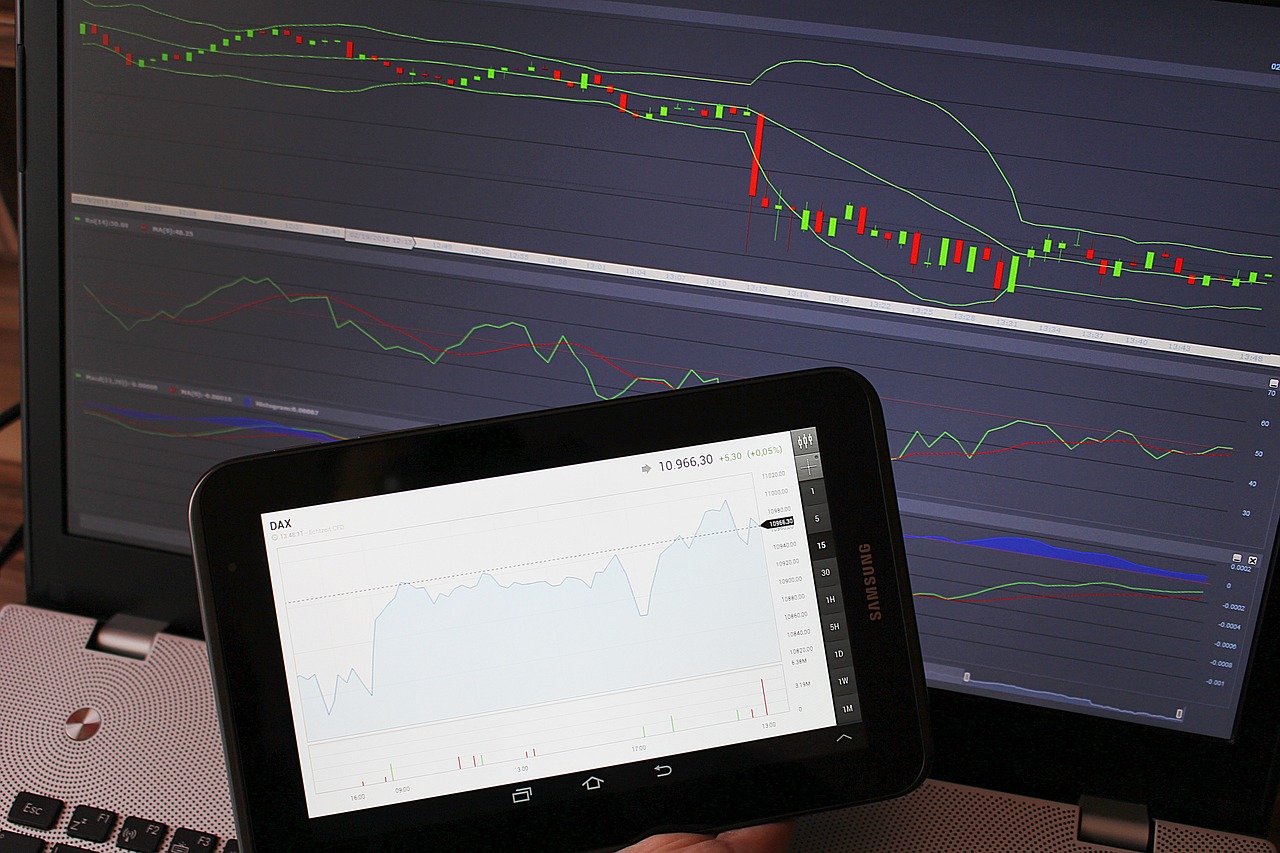
Inflation and Cryptocurrency Value
Inflation is often seen as the arch-nemesis of traditional currencies. When the cost of goods and services rises, the purchasing power of fiat money diminishes, leaving many investors scrambling for safe havens. This is where cryptocurrencies come into play. As inflation rates climb, more and more individuals turn to digital currencies, viewing them as a robust hedge against the erosion of value. But how exactly does inflation influence the demand and pricing of cryptocurrencies?
To understand this dynamic, it's essential to recognize that cryptocurrencies, particularly Bitcoin, have been marketed as "digital gold." Just like gold, which has historically been a refuge during economic uncertainty, cryptocurrencies offer a sense of security against the backdrop of inflation. When investors lose faith in traditional fiat currencies, they often seek alternatives that can potentially preserve their wealth. This shift in sentiment can lead to a surge in demand for cryptocurrencies, subsequently driving prices upward.
For instance, during periods of heightened inflation, we often see a marked increase in cryptocurrency adoption. Investors, feeling the pinch of rising prices, may choose to allocate a portion of their portfolios to digital assets. This influx of capital can create a self-reinforcing cycle: as prices rise, more people take notice, further fueling interest and investment in cryptocurrencies. The following table illustrates the correlation between inflation rates and cryptocurrency price movements over the last decade:
| Year | Inflation Rate (%) | Bitcoin Price (USD) |
|---|---|---|
| 2013 | 1.5 | $1,000 |
| 2017 | 2.1 | $20,000 |
| 2020 | 1.2 | $29,000 |
| 2021 | 5.4 | $64,000 |
As the table shows, there is a noticeable trend where rising inflation correlates with increasing Bitcoin prices. However, it's crucial to approach this relationship with a nuanced perspective. While inflation can drive demand for cryptocurrencies, other factors such as market sentiment, technological advancements, and regulatory changes also play a significant role in determining price movements.
Another fascinating aspect of inflation's impact on cryptocurrency value is how it alters investor behavior. During inflationary periods, investors often gravitate towards assets they perceive as having long-term value. This behavior can lead to a shift in trading strategies. For example, some traders may adopt a "buy and hold" approach, believing that cryptocurrencies will appreciate over time as more people seek refuge from inflation. Others might engage in active trading, capitalizing on short-term price fluctuations driven by news and market sentiment.
Ultimately, the relationship between inflation and cryptocurrency value is complex and multifaceted. As inflation continues to rise in various economies worldwide, understanding this dynamic becomes increasingly important for traders and investors alike. Are you ready to navigate this ever-changing landscape? The key is to stay informed, adapt your strategies, and keep an eye on both macroeconomic indicators and the evolving world of digital currencies.
- How does inflation affect cryptocurrency prices? Inflation typically drives demand for cryptocurrencies as investors seek to protect their wealth from currency devaluation.
- Are cryptocurrencies a safe hedge against inflation? While many view cryptocurrencies as a hedge against inflation, they are still volatile and should be approached with caution.
- What other factors influence cryptocurrency prices? Aside from inflation, market sentiment, regulatory changes, and technological advancements also significantly impact prices.

Historical Trends in Inflation
When we look back at the , it’s almost like peering through a time capsule that reveals how economic conditions shape the world of cryptocurrency. Inflation, the gradual increase in prices and the fall in purchasing power, has been a recurring theme in global economies. One of the most striking examples occurred during the 1970s, a decade marked by soaring inflation rates that led many investors to seek alternative assets, including gold and, more recently, cryptocurrencies.
As inflation rates climbed, particularly during periods of economic uncertainty, the demand for cryptocurrencies began to emerge as a viable hedge against the devaluation of fiat currencies. For instance, in the wake of the 2008 financial crisis, many individuals turned to Bitcoin, which was created as a response to the failures of traditional banking systems. This shift was not merely a trend; it was a pivotal moment that set the stage for the cryptocurrency boom we witness today.
To understand these patterns more clearly, let’s take a look at some key inflationary periods and their corresponding impacts on cryptocurrency adoption:
| Year | Inflation Rate (%) | Cryptocurrency Adoption |
|---|---|---|
| 1975 | 9.14 | Increased interest in alternative assets |
| 2008 | 3.84 | Launch of Bitcoin; surge in interest |
| 2020 | 1.23 | Bitcoin reaches new highs amid economic stimulus |
| 2021 | 5.39 | Massive influx of retail investors into crypto |
This table illustrates how rising inflation has often correlated with increased interest in cryptocurrencies. As inflation rates rise, so too does the allure of decentralized digital currencies that promise a degree of protection against traditional market volatility. Investors begin to perceive cryptocurrencies not just as speculative assets, but as essential components of a diversified portfolio.
Moreover, historical trends indicate that during periods of high inflation, investor sentiment shifts dramatically. People tend to become more risk-averse, often leading them to seek out stable and decentralized assets. This behavioral change can significantly influence market dynamics, driving prices up as demand surges.
In summary, examining the provides valuable insights into the evolving relationship between macroeconomic factors and cryptocurrency markets. As we continue to navigate through economic uncertainties, understanding these patterns will be crucial for traders and investors looking to make informed decisions in the ever-changing landscape of digital currencies.
- What is the relationship between inflation and cryptocurrency?
Inflation often drives investors towards cryptocurrencies as a hedge against currency devaluation, leading to increased demand and higher prices. - How can historical inflation trends help predict future cryptocurrency movements?
By analyzing past inflationary periods, traders can identify patterns in investor behavior and adjust their strategies accordingly. - Are all cryptocurrencies affected equally by inflation?
No, different cryptocurrencies may respond differently based on their use cases, market perception, and underlying technology.
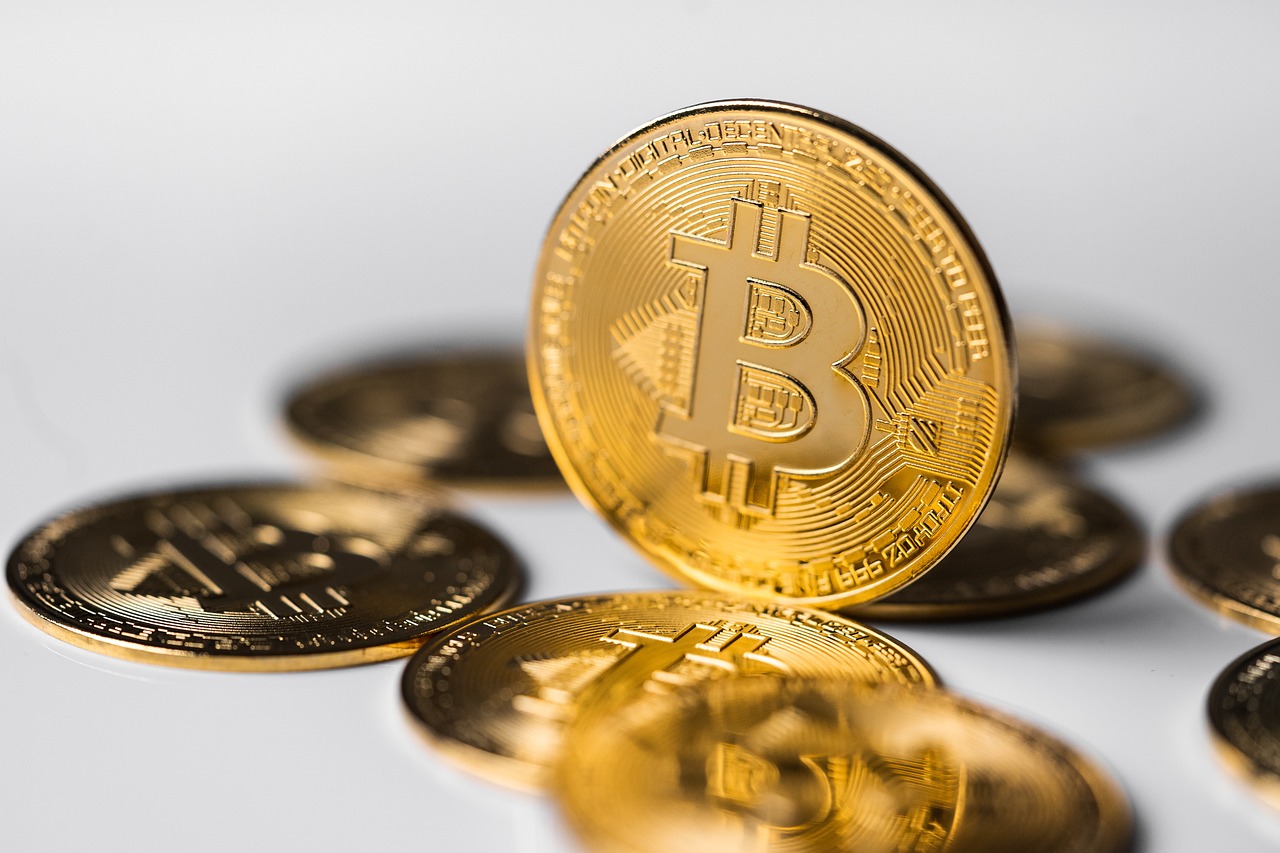
Investor Behavior During Inflation
When inflation rears its head, it’s like a storm brewing on the horizon, and savvy investors know they need to prepare their ships for turbulent waters. During inflationary periods, the typical investor behavior shifts dramatically, often leading to a flurry of activity in the cryptocurrency markets. But why does this happen? The answer lies in the fundamental human instinct to protect wealth. As the purchasing power of traditional currencies declines, many investors see cryptocurrencies as a lifeboat, offering a potential refuge from the storm.
In times of rising prices, investors tend to flock to assets that they believe will retain their value or even appreciate. Cryptocurrencies, with their decentralized nature and limited supply, become increasingly attractive. This behavior can be broken down into a few key patterns:
- Increased Demand for Digital Assets: As inflation escalates, more investors turn to cryptocurrencies, driving up demand. This surge can lead to significant price increases, which further attracts new investors eager to capitalize on potential gains.
- Shift from Traditional Investments: Investors often shift their portfolios away from traditional assets like stocks and bonds, which may not keep pace with inflation. Instead, they seek out cryptocurrencies, viewing them as a hedge against economic instability.
- Speculation and Volatility: The crypto market is notorious for its volatility, and during inflationary times, this can be exacerbated. Investors may engage in speculative trading, hoping to take advantage of rapid price fluctuations.
Moreover, the psychology of fear and greed plays a significant role. When inflation fears grip the market, the sentiment often swings towards panic buying, as investors rush to secure their positions before prices skyrocket. This behavior can create a feedback loop, where rising prices lead to more buying, further inflating the market. Conversely, if inflation fears subside, the market can experience a sharp correction as investors look to cash in on their gains.
To illustrate this, consider the following table that highlights key aspects of investor behavior during inflation:
| Behavior | Description |
|---|---|
| Increased Demand | Investors seek cryptocurrencies as a store of value. |
| Portfolio Shift | Transition from traditional assets to digital currencies. |
| Speculative Trading | Heightened trading activity due to price volatility. |
| Panic Buying | Fear of missing out on potential gains drives purchases. |
In summary, understanding investor behavior during inflation is crucial for anyone looking to navigate the crypto markets effectively. As economic conditions fluctuate, so too do the motivations and strategies of investors. By keeping a keen eye on these trends, traders can make informed decisions that align with the shifting tides of the market.
Q: How does inflation directly affect cryptocurrency prices?
A: Inflation can lead to increased demand for cryptocurrencies as investors seek to protect their wealth from currency devaluation, often resulting in higher prices.
Q: What should traders consider during inflationary periods?
A: Traders should monitor economic indicators, investor sentiment, and market trends, adjusting their strategies accordingly to capitalize on potential opportunities.
Q: Are all cryptocurrencies affected equally by inflation?
A: Not necessarily. While many cryptocurrencies may see increased interest, factors such as utility, market cap, and community support can influence how each one reacts to inflation.

Global Events and Market Reactions
In the fast-paced world of cryptocurrency trading, global events play a pivotal role in shaping market dynamics. Just think about it: a single tweet from a prominent figure or a sudden geopolitical crisis can send prices soaring or plummeting within minutes. This volatility is what makes cryptocurrency both an exciting and risky investment avenue. But what exactly drives these market reactions? Let's dive deeper.
One of the most significant factors influencing cryptocurrency prices is geopolitical tensions. When countries face instability—be it through wars, sanctions, or leadership changes—investors often seek refuge in assets perceived as more stable. Cryptocurrencies, with their decentralized nature, can be seen as a safe haven. For instance, during times of uncertainty in traditional markets, many investors flock to Bitcoin, viewing it as a hedge against potential losses in more conventional assets.
Moreover, financial crises also have a profound impact on the crypto market. Take the 2008 financial crisis, for example. It was a pivotal moment that led to the birth of Bitcoin. As trust in banks and traditional financial institutions eroded, the idea of a decentralized currency gained traction. Fast forward to today, and we see similar patterns emerge. When stock markets tumble due to economic downturns, cryptocurrencies often experience a surge as investors look to diversify their portfolios.
Another crucial element to consider is regulatory announcements. Governments around the world are still grappling with how to regulate cryptocurrencies. A positive regulatory announcement can lead to a spike in prices, while negative news can send traders into a panic. For instance, when China announced a crackdown on cryptocurrency mining in 2021, Bitcoin's value dropped significantly. This illustrates how sensitive the cryptocurrency market is to regulatory news.
To better understand these reactions, let's examine a few key global events and their immediate impacts on cryptocurrency prices:
| Event | Date | Impact on Cryptocurrency |
|---|---|---|
| China's Mining Ban | June 2021 | Bitcoin dropped by 50% within weeks. |
| El Salvador Adopts Bitcoin as Legal Tender | September 2021 | Bitcoin surged to an all-time high. |
| COVID-19 Pandemic Announcement | March 2020 | Initial drop, followed by a significant recovery. |
These examples illustrate the immediate and often dramatic reactions that can occur within the cryptocurrency market due to global events. Traders who stay informed about these happenings can better anticipate market movements, allowing them to make more strategic decisions. However, it's important to remember that while these events can create opportunities, they also come with inherent risks.
In conclusion, global events are like the weather in the world of cryptocurrency trading—unpredictable and ever-changing. By keeping an eye on the news and understanding how these events influence market behavior, traders can position themselves to navigate the stormy seas of the crypto market more effectively.
- How do global events affect cryptocurrency prices?
Global events can lead to sudden market shifts, impacting investor sentiment and trading strategies. - What are some examples of global events that have impacted cryptocurrency?
Geopolitical tensions, financial crises, and regulatory announcements are key events that can influence cryptocurrency prices. - How can traders prepare for market reactions to global events?
Staying informed about current events and understanding their potential impacts can help traders make informed decisions.

Technological Advancements in Trading
In the fast-paced world of cryptocurrency trading, technology plays a pivotal role in shaping strategies and outcomes. As digital currencies gain traction, traders are increasingly leveraging innovative tools and platforms to enhance their trading experiences. From algorithmic trading to blockchain advancements, these technological breakthroughs are not just trends; they are essential components of modern trading that can make or break a trader's success.
One of the most significant advancements is the rise of algorithmic trading. This method employs sophisticated algorithms to execute trades based on predetermined criteria, such as price movements or market trends. Imagine having a personal assistant who can analyze thousands of data points in a split second and make trading decisions for you. That's the power of algorithmic trading! It allows traders to capitalize on fleeting opportunities without the need for constant monitoring, thereby reducing the emotional stress often associated with trading.
Moreover, the efficiency of algorithmic trading can lead to improved market liquidity. When multiple traders use algorithms to buy and sell, the market becomes more active, resulting in tighter spreads and better prices for all participants. However, it’s essential to remember that while algorithmic trading can enhance efficiency, it also introduces risks, such as system failures or market manipulation. Thus, traders must remain vigilant and informed about these technologies.
Another revolutionary aspect of cryptocurrency trading is the impact of blockchain technology. Blockchain, the underlying technology of cryptocurrencies, offers unparalleled transparency and security. Each transaction is recorded on a public ledger, making it nearly impossible to alter past transactions without detection. This transparency fosters trust among investors, which is crucial in an industry often plagued by skepticism and fraud. As a result, traders can feel more secure in their transactions, knowing that the technology provides a reliable framework.
Furthermore, blockchain technology has paved the way for decentralized exchanges (DEXs). Unlike traditional exchanges, which are centralized and often vulnerable to hacks, DEXs operate on a peer-to-peer basis. This means that traders can execute transactions directly with one another, without an intermediary. The benefits are clear: increased security, lower fees, and greater control over funds. However, it's important to note that DEXs may come with their own set of challenges, such as lower liquidity and more complex user interfaces.
As we look to the future, the integration of artificial intelligence (AI) in trading platforms is also on the horizon. AI can analyze vast amounts of data and provide insights that human traders might overlook. Imagine having a virtual trading partner that learns from your trading habits and helps you refine your strategies. This could significantly enhance decision-making processes, allowing traders to stay ahead of the curve in a rapidly evolving market.
In summary, the technological advancements in trading are not just enhancements; they are transformative forces that redefine how we engage with cryptocurrency. As traders embrace these innovations, they must also remain aware of the accompanying risks and challenges. The key is to strike a balance between leveraging technology and maintaining a solid understanding of the market dynamics.
- What is algorithmic trading? - Algorithmic trading uses computer algorithms to automate trading decisions based on specific criteria.
- How does blockchain enhance security in trading? - Blockchain records all transactions on a public ledger, making it nearly impossible to alter past records, thus enhancing security.
- What are decentralized exchanges (DEXs)? - DEXs allow traders to transact directly with one another without the need for a centralized intermediary.
- What role does AI play in cryptocurrency trading? - AI analyzes large datasets to provide insights and optimize trading strategies, enhancing decision-making capabilities.
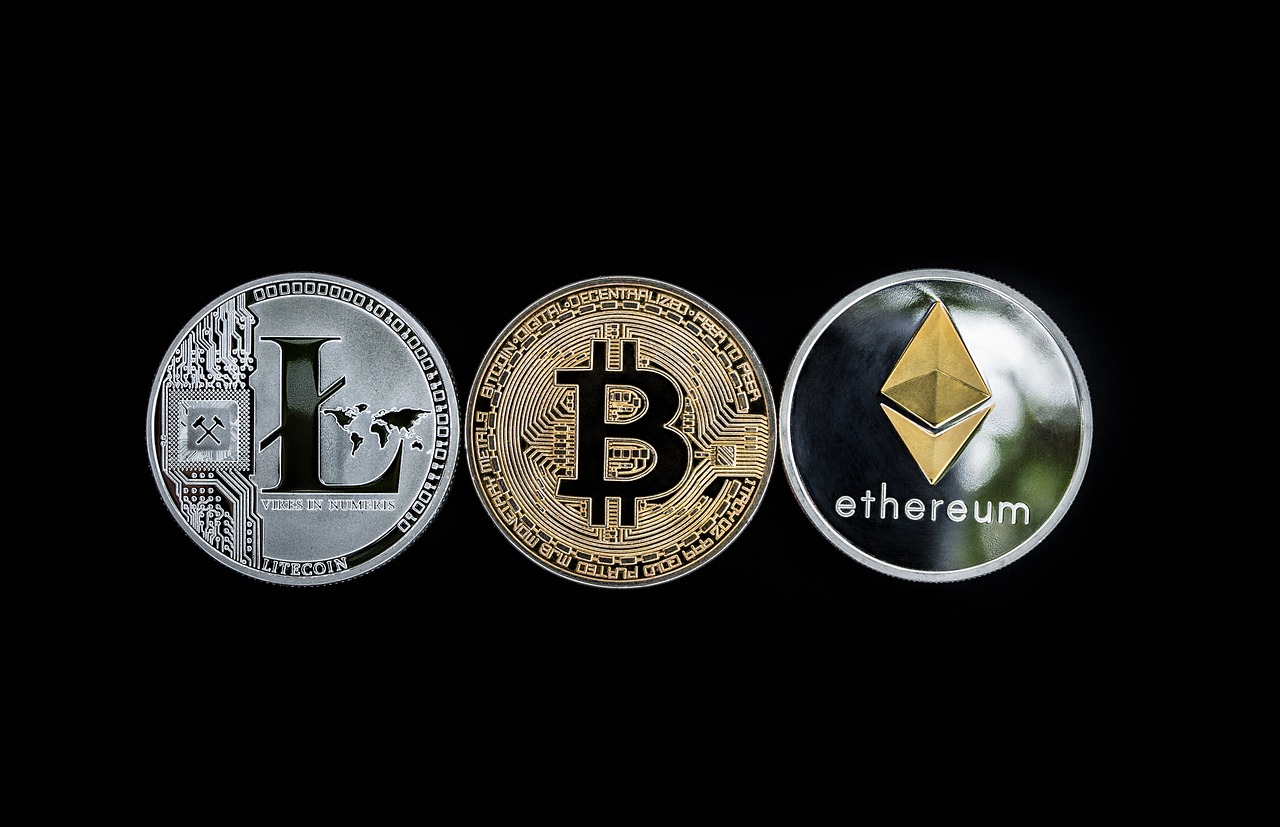
Algorithmic Trading Strategies
In the fast-paced world of cryptocurrency trading, have emerged as a game-changer for both seasoned investors and newcomers alike. But what exactly does this mean? At its core, algorithmic trading refers to the use of computer algorithms to automate the buying and selling of cryptocurrencies based on predefined criteria. This means traders can execute orders at lightning speed without the need for constant human intervention. Imagine having a personal assistant that never sleeps, always on the lookout for the best trading opportunities—that’s the power of algorithms!
One of the most significant benefits of algorithmic trading is its ability to analyze vast amounts of data in real time. Traders can set parameters such as price thresholds, volume levels, and timing to capture market movements. For instance, if Bitcoin's price drops below a certain level, an algorithm can automatically execute a buy order, allowing traders to capitalize on dips without needing to monitor the market 24/7. This efficiency not only saves time but also reduces the emotional stress often associated with trading.
However, it's crucial to understand that not all algorithms are created equal. There are various strategies traders can employ, each with its own set of rules and market conditions. Here are some popular algorithmic trading strategies:
- Trend Following: This strategy involves identifying and riding market trends. Algorithms can be programmed to buy when an asset is trending upwards and sell when it starts to decline.
- Arbitrage: Traders can exploit price discrepancies across different exchanges. Algorithms can quickly identify these differences and execute trades to profit from them.
- Market Making: This involves placing buy and sell orders simultaneously to profit from the spread between the bid and ask prices. Algorithms can adjust these orders in real time to maintain profitability.
While algorithmic trading offers remarkable advantages, it’s not without its challenges. Market volatility can lead to unexpected outcomes, and poorly designed algorithms can result in significant losses. Therefore, traders must continuously monitor and adjust their strategies to adapt to changing market conditions. Moreover, the importance of backtesting cannot be overstated. By simulating trades based on historical data, traders can refine their algorithms and improve their chances of success in the live market.
In conclusion, algorithmic trading strategies represent a powerful tool in the arsenal of modern cryptocurrency traders. By leveraging technology, traders can enhance their decision-making processes, reduce emotional biases, and potentially increase their profitability. As the landscape of cryptocurrency continues to evolve, those who embrace these strategies will likely find themselves at a considerable advantage.
- What is algorithmic trading? Algorithmic trading is the use of computer algorithms to automate trading decisions based on predefined criteria.
- How does algorithmic trading benefit traders? It allows for faster execution of trades, reduces emotional decision-making, and can analyze large data sets in real-time.
- Are there risks associated with algorithmic trading? Yes, market volatility and poorly designed algorithms can lead to significant losses, so continuous monitoring is essential.
- Can beginners use algorithmic trading? While it can be beneficial, beginners should educate themselves on trading strategies and market conditions before diving in.

Blockchain's Impact on Transparency
Blockchain technology is often hailed as a revolutionary force in the world of finance, and one of its most significant contributions is enhancing transparency in transactions. Unlike traditional financial systems, where transactions can be opaque and difficult to trace, blockchain offers a decentralized ledger that records all transactions in a manner that is both secure and publicly accessible. This feature not only builds trust among users but also has far-reaching implications for how cryptocurrencies are traded and perceived in the market.
Imagine a world where every transaction is visible to anyone who wants to see it. That's the essence of blockchain. Each transaction is recorded in a block, and once that block is filled, it is linked to the previous block, forming a chain. This chain is immutable, meaning it cannot be altered retroactively without the consensus of the network. This level of transparency is a game-changer for traders and investors alike, as it allows them to verify the authenticity of transactions and track the flow of assets in real time.
Moreover, the transparency provided by blockchain can significantly reduce fraud and corruption. In traditional systems, the potential for manipulation is high, often leading to scandals that erode public trust. However, with blockchain, every participant in the network can view the same information, making it extremely difficult for any single entity to alter the data without detection. This democratization of information empowers traders to make informed decisions based on accurate data rather than speculation or rumor.
The impact of blockchain on transparency can be further illustrated through a comparison of traditional banking systems and blockchain-based transactions. Below is a simple table that outlines the key differences:
| Aspect | Traditional Banking | Blockchain Technology |
|---|---|---|
| Transaction Visibility | Limited to bank records | Publicly accessible ledger |
| Data Alteration | Possible with bank intervention | Immutable once recorded |
| Trust Level | Dependent on financial institutions | Trustless; relies on code |
| Transaction Speed | Can be slow due to intermediaries | Often faster with direct peer-to-peer transactions |
As we look to the future, the transparency offered by blockchain technology is likely to attract more investors to the cryptocurrency market. With increasing scrutiny from regulators and the public, having a transparent system can serve as a competitive advantage. Traders are more likely to engage with platforms that prioritize transparency, knowing that their investments are secure and traceable.
In conclusion, the impact of blockchain on transparency is profound. It not only enhances trust among users but also fosters a more efficient and secure trading environment. As the cryptocurrency landscape continues to evolve, the principles of transparency embedded in blockchain technology will undoubtedly play a crucial role in shaping the future of trading, making it an exciting time to be involved in this dynamic market.
- What is blockchain technology?
Blockchain is a decentralized digital ledger that records transactions across many computers in such a way that the registered transactions cannot be altered retroactively.
- How does blockchain enhance transparency?
Blockchain enhances transparency by allowing all participants in the network to access the same information, making it difficult to manipulate data without detection.
- What are the benefits of using blockchain for cryptocurrency trading?
The benefits include increased trust, reduced fraud, real-time transaction tracking, and a more efficient trading environment.
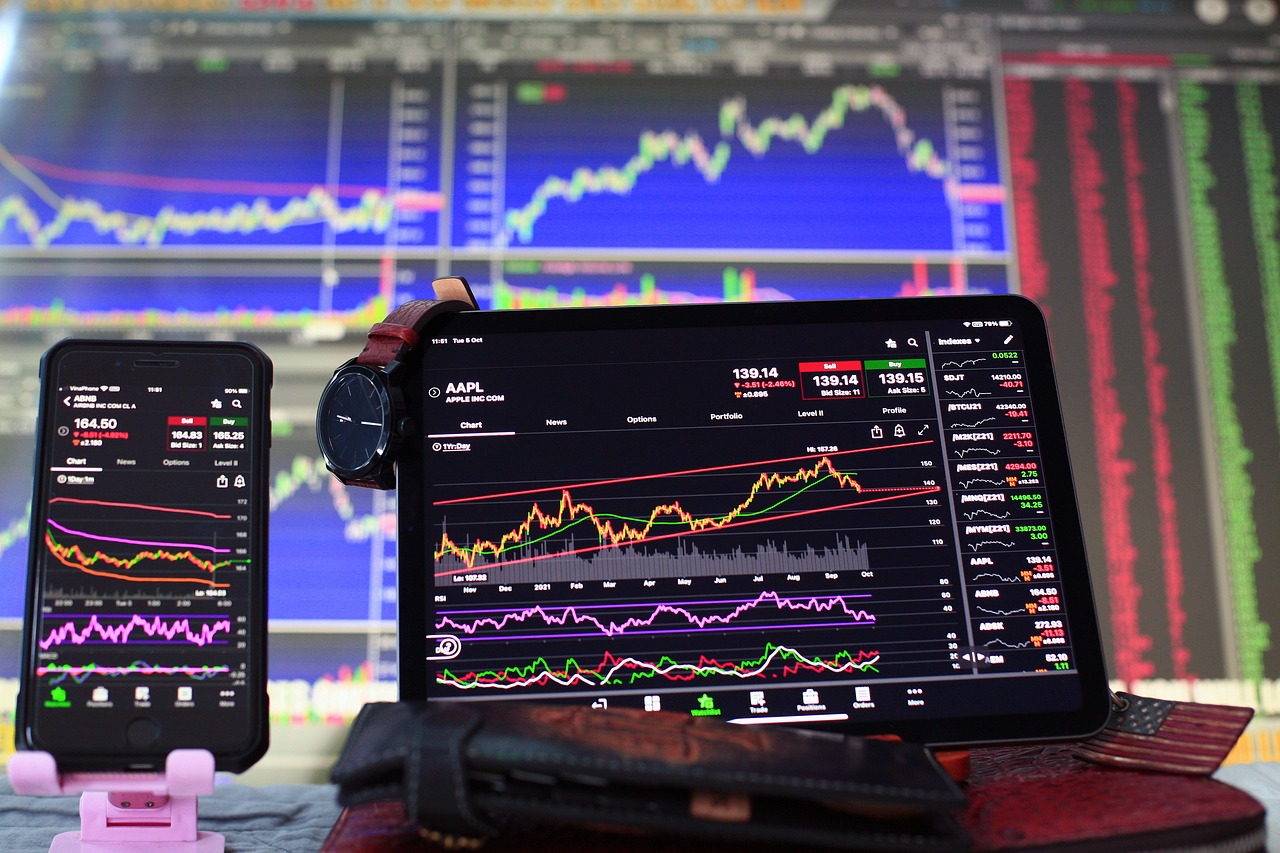
Future Trends in Cryptocurrency Trading
As we look ahead, the world of cryptocurrency trading is poised for significant transformation. The landscape is evolving rapidly, influenced by a myriad of factors including technological advancements, regulatory changes, and shifts in investor behavior. One of the most exciting developments on the horizon is the rise of Decentralized Finance (DeFi). DeFi platforms are not just a buzzword; they are revolutionizing the way financial services are delivered by eliminating intermediaries. This paradigm shift allows users to lend, borrow, and trade directly with one another, fostering a more inclusive financial ecosystem.
Moreover, the growth of DeFi is impacting trading strategies in profound ways. Traders are now able to access liquidity pools and yield farming opportunities that were previously unavailable in traditional finance. This increased accessibility is leading to a surge in participation from both retail and institutional investors. As more people engage with these platforms, the demand for innovative trading strategies that incorporate DeFi principles is likely to grow. For instance, traders might develop strategies that leverage liquidity provision or exploit arbitrage opportunities across different DeFi platforms.
In addition to DeFi, regulatory changes will play a crucial role in shaping the future of cryptocurrency trading. As governments around the world begin to establish clearer regulations, traders must stay informed to navigate this evolving legal landscape. Regulations can vary significantly from one country to another, impacting everything from tax obligations to trading practices. For instance, some countries are embracing cryptocurrencies by creating favorable regulatory environments, while others are imposing strict restrictions. This regulatory dichotomy can create opportunities for traders who are agile and can adapt their strategies accordingly.
Furthermore, as regulations become more standardized, we may see an increase in institutional adoption of cryptocurrencies. Major financial institutions are beginning to recognize the potential of digital assets, leading to the development of cryptocurrency investment products such as ETFs (Exchange-Traded Funds). This trend could attract a new wave of investors, further legitimizing the crypto market and increasing overall trading volume.
Another trend to watch is the integration of artificial intelligence (AI) and machine learning into trading practices. These technologies can analyze vast amounts of data to identify patterns and trends that human traders might miss. By automating certain aspects of trading, AI can help traders make more informed decisions and react to market changes in real-time. This could lead to more efficient trading strategies and potentially higher returns.
To summarize, the future of cryptocurrency trading is bright yet complex. With the rise of DeFi, evolving regulations, and the integration of advanced technologies like AI, traders must stay vigilant and adaptable. The opportunities are immense, but so are the challenges. As we move forward, the ability to navigate these trends will be crucial for success in the ever-changing world of cryptocurrency.
- What is Decentralized Finance (DeFi)? DeFi refers to financial services that are built on blockchain technology, allowing users to conduct transactions without intermediaries.
- How will regulations affect cryptocurrency trading? Regulations can impact trading practices, tax obligations, and the overall legitimacy of cryptocurrencies in different markets.
- What role does artificial intelligence play in cryptocurrency trading? AI can analyze data and identify trends, helping traders make informed decisions and automate trading processes.
- Are there risks associated with DeFi? Yes, while DeFi offers many opportunities, it also carries risks such as smart contract vulnerabilities and market volatility.
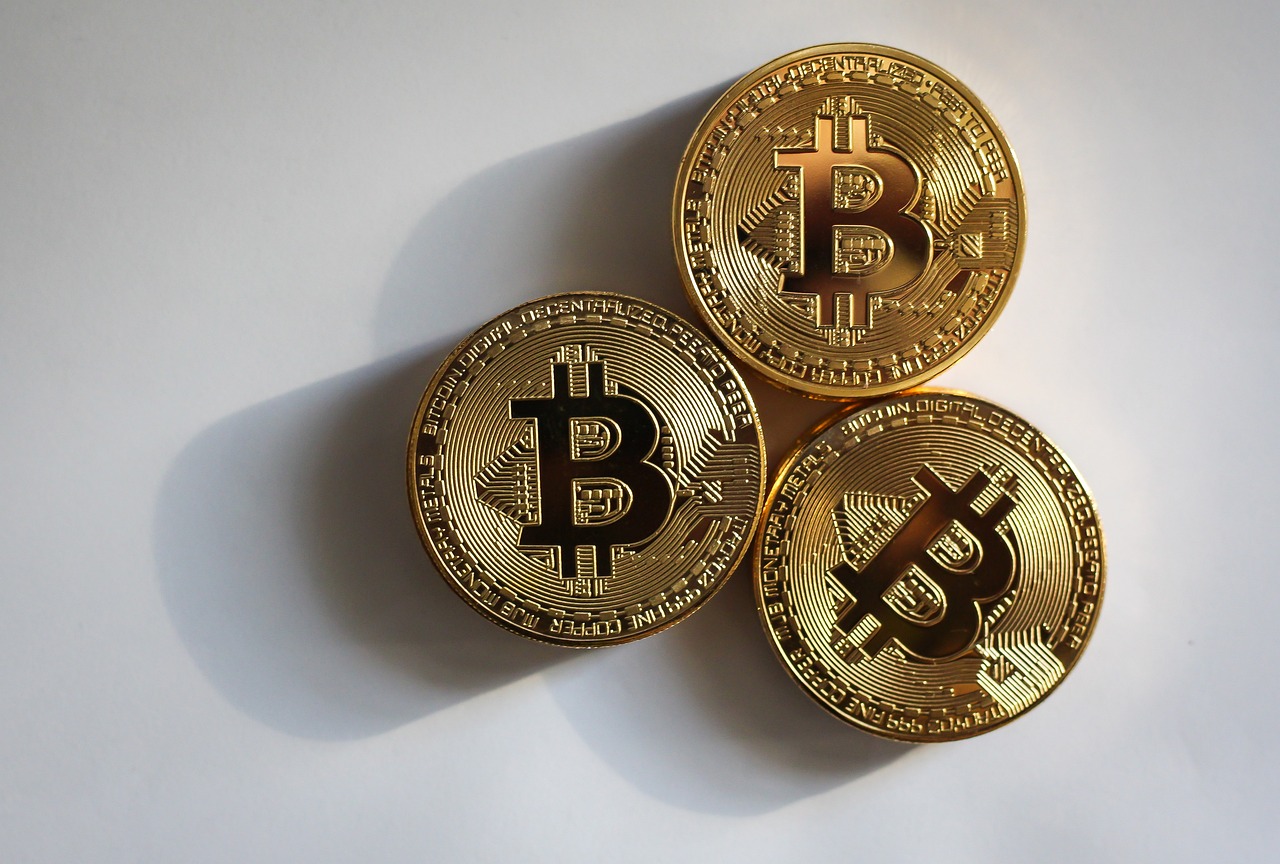
Decentralized Finance (DeFi) Growth
Decentralized Finance, or DeFi, is rapidly emerging as a transformative force within the cryptocurrency landscape. Imagine a financial system where traditional intermediaries like banks are replaced by smart contracts and blockchain technology. This shift not only enhances accessibility but also democratizes finance, allowing anyone with an internet connection to participate in a global economy. The growth of DeFi is akin to a tidal wave, reshaping how we think about financial transactions, lending, and investing.
One of the most exciting aspects of DeFi is its ability to provide financial services without centralized control. Users can lend, borrow, trade, and earn interest on their assets directly through decentralized platforms, which operate autonomously through code. This system eliminates the need for a middleman, reducing fees and increasing transaction speed. For instance, platforms like Uniswap and Aave allow users to swap tokens and lend assets without the cumbersome processes typically associated with traditional finance.
As DeFi continues to grow, it introduces new trading strategies that were previously unavailable. Traders can utilize yield farming and liquidity mining to maximize their returns. Yield farming involves staking or lending crypto assets to generate high returns in the form of additional cryptocurrency. On the other hand, liquidity mining rewards users for providing liquidity to decentralized exchanges (DEXs). These strategies not only enhance market liquidity but also create opportunities for traders to profit in innovative ways.
However, with great opportunity comes significant risk. The DeFi space is still relatively new, and the lack of regulation can lead to vulnerabilities. Smart contract bugs, hacking incidents, and market volatility can pose threats to users' investments. Therefore, it’s crucial for traders to conduct thorough research and understand the underlying protocols before diving into the DeFi world. The importance of due diligence cannot be overstated; just like you wouldn’t jump into a pool without checking the water depth, you should always assess the risks involved in DeFi.
To illustrate the rapid growth of DeFi, consider the following table showcasing the total value locked (TVL) in DeFi projects over the past year:
| Month | Total Value Locked (in billions) |
|---|---|
| January 2023 | $15 billion |
| April 2023 | $30 billion |
| July 2023 | $50 billion |
| October 2023 | $70 billion |
This table highlights the exponential growth of DeFi, showcasing how quickly interest and investment have surged within this sector. As more users become aware of the potential benefits, we can expect the DeFi ecosystem to evolve further, leading to even more innovative financial products and services.
In conclusion, the growth of DeFi represents a significant shift in the financial paradigm. It offers unprecedented opportunities for traders and investors, while also presenting unique challenges. As the landscape continues to evolve, staying informed and adaptable will be key to navigating the exciting world of decentralized finance.
- What is DeFi? DeFi stands for Decentralized Finance, which refers to financial services that operate on blockchain technology without traditional intermediaries.
- How can I participate in DeFi? You can participate in DeFi by using decentralized platforms to lend, borrow, or trade cryptocurrencies.
- What are the risks associated with DeFi? Risks include smart contract vulnerabilities, market volatility, and potential hacking incidents.
- Is DeFi regulated? Currently, DeFi operates in a largely unregulated environment, which can pose risks for users.
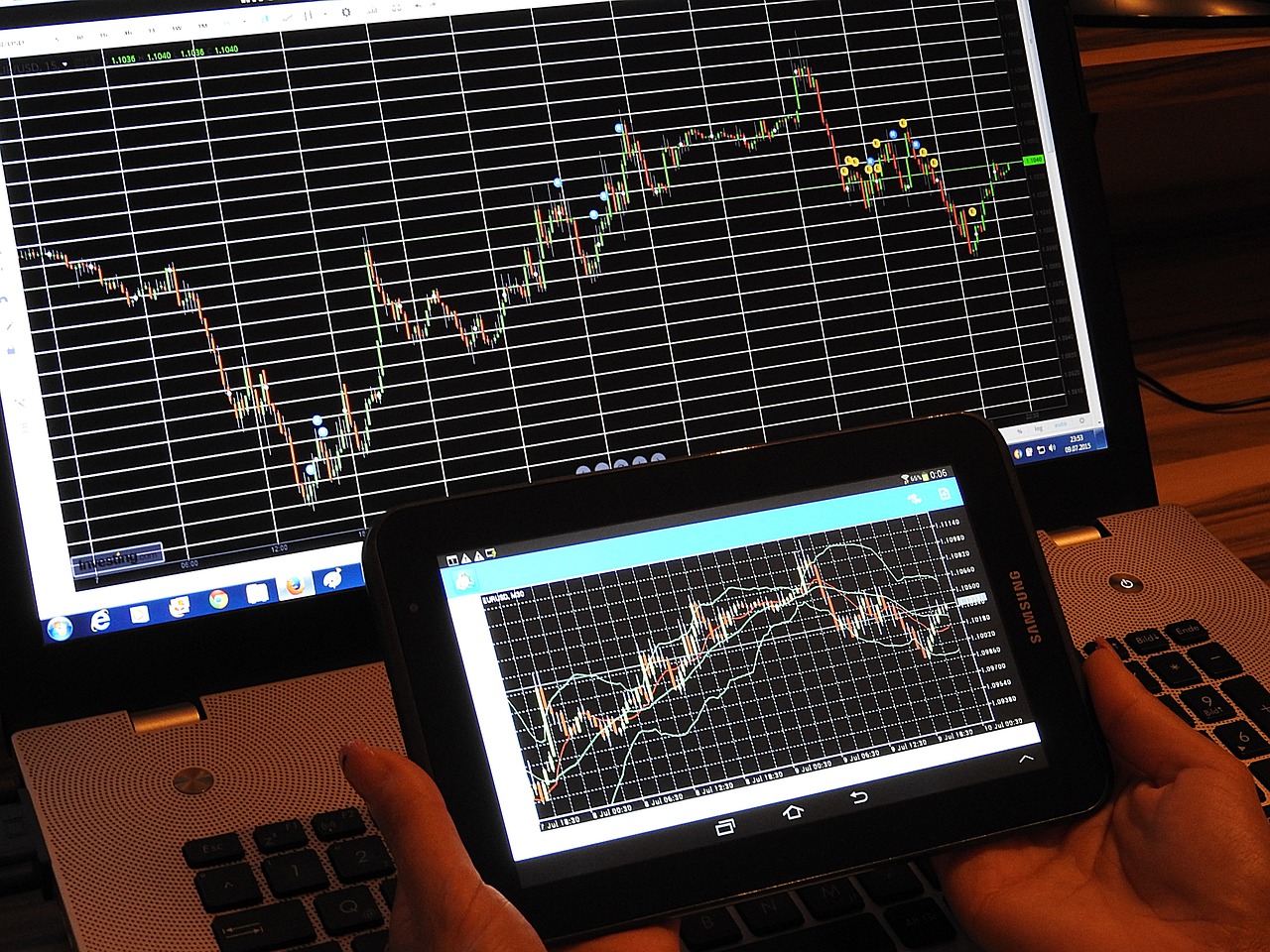
Regulatory Landscape Changes
The regulatory landscape surrounding cryptocurrency is akin to navigating a turbulent sea—constantly shifting and often unpredictable. As digital currencies gain traction, governments worldwide are scrambling to establish frameworks that both foster innovation and protect investors. This duality creates a complex environment for traders who must stay informed about the latest developments to make strategic decisions.
In the past few years, we have witnessed a significant evolution in how different countries approach cryptocurrency regulation. For instance, some nations have embraced cryptocurrencies, creating favorable conditions for trading and investment, while others have imposed strict regulations or outright bans. The United States has been particularly noteworthy; regulatory bodies like the SEC (Securities and Exchange Commission) and CFTC (Commodity Futures Trading Commission) have been actively working to define the legal status of various digital assets.
Consider the example of China, which has oscillated between supporting blockchain technology and cracking down on cryptocurrency trading. This inconsistency has led to a wave of uncertainty, prompting traders to reassess their strategies. The impact of such regulatory changes can be profound, as they can lead to sudden price fluctuations and shifts in market sentiment. For traders, understanding these dynamics is essential for navigating the often volatile waters of cryptocurrency trading.
Moreover, the introduction of regulations can also pave the way for increased institutional investment. As regulatory clarity improves, more traditional financial institutions may feel confident entering the cryptocurrency space, potentially driving up demand and prices. However, this influx of institutional capital can also lead to increased scrutiny and compliance requirements, which may pose challenges for smaller traders and startups.
To illustrate the varying regulatory approaches, consider the following table that highlights how different countries are responding to the cryptocurrency phenomenon:
| Country | Regulatory Approach | Impact on Trading |
|---|---|---|
| United States | Developing regulatory framework | Increased institutional interest |
| China | Crackdown on trading | Market volatility and uncertainty |
| European Union | Proposed regulations for clarity | Potential for growth in investor confidence |
| El Salvador | Bitcoin as legal tender | Increased adoption and interest |
As we move forward, it’s crucial for traders to remain vigilant and adaptable. Regulatory changes can happen overnight, and being caught off-guard can lead to significant losses. Keeping an eye on news, engaging with community discussions, and leveraging analytical tools can help traders stay ahead of the curve. Additionally, understanding the implications of these regulatory changes not only helps in risk management but also in identifying new opportunities for investment.
In conclusion, the regulatory landscape is a vital component of the cryptocurrency trading environment. As regulations evolve, they will undoubtedly shape the future of digital currencies, influencing everything from market dynamics to investor behavior. Traders who can navigate these changes with agility will be better positioned to capitalize on the opportunities that arise in this fast-paced market.
- What are the main regulatory bodies overseeing cryptocurrencies? The main regulatory bodies include the SEC in the United States, the FCA in the United Kingdom, and various financial authorities around the world.
- How do regulations affect cryptocurrency prices? Regulatory announcements can lead to immediate price fluctuations, as traders react to potential impacts on market accessibility and investor sentiment.
- What should traders do to stay updated on regulations? Traders should follow financial news, subscribe to cryptocurrency newsletters, and engage with online communities to stay informed about regulatory changes.
Frequently Asked Questions
- What factors influence cryptocurrency prices?
Cryptocurrency prices are influenced by a variety of factors, including economic indicators like inflation rates, employment statistics, and GDP growth. Global events such as geopolitical tensions and financial crises also play a significant role. Understanding these factors can help traders anticipate market movements and make informed decisions.
- How does inflation affect cryptocurrency trading?
Inflation often drives investors towards cryptocurrencies as a hedge against currency devaluation. When inflation rises, demand for cryptocurrencies typically increases, which can lead to higher prices. This shift in investor behavior can significantly impact trading strategies and market dynamics.
- What is algorithmic trading and how does it work?
Algorithmic trading involves using complex mathematical models to execute trades automatically based on predefined criteria. This method allows traders to capitalize on market trends without the need for constant monitoring, enhancing trading efficiency and potentially increasing profits.
- How does blockchain technology impact cryptocurrency transactions?
Blockchain technology enhances transparency in cryptocurrency transactions, which fosters trust among investors. This increased transparency can influence trading behaviors by encouraging more participants to enter the market, knowing that transactions are secure and verifiable.
- What are decentralized finance (DeFi) platforms?
Decentralized finance (DeFi) platforms are innovative systems that provide financial services without the need for traditional intermediaries like banks. They offer decentralized alternatives for trading, lending, and investing, which can significantly impact trading strategies and market liquidity.
- How do regulatory changes affect cryptocurrency trading?
Regulatory developments across different countries can have a profound impact on cryptocurrency trading. Changes in laws and regulations can create both opportunities and challenges for traders, making it essential to stay informed about the evolving legal landscape to navigate the market effectively.






